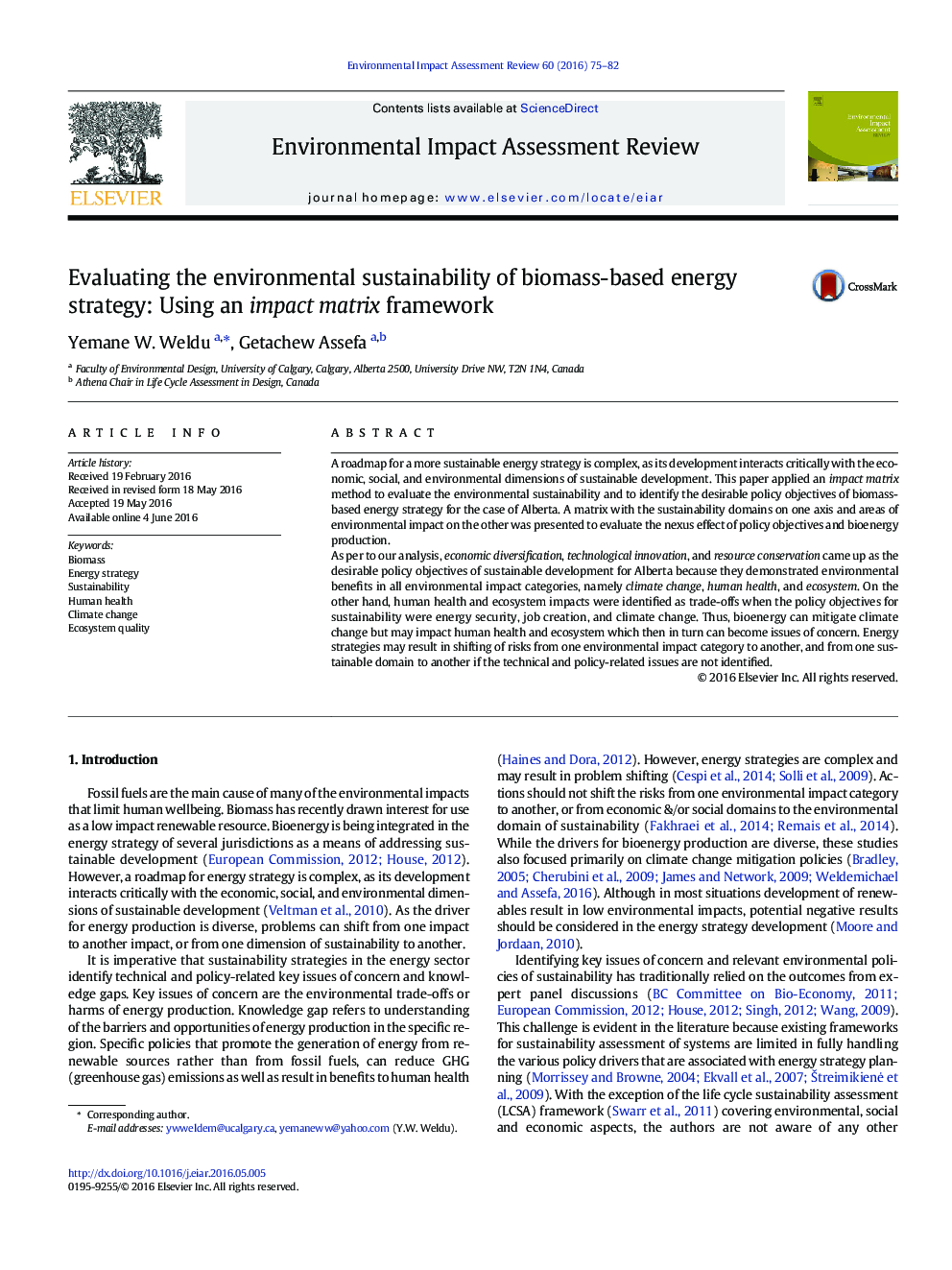| Article ID | Journal | Published Year | Pages | File Type |
|---|---|---|---|---|
| 1052635 | Environmental Impact Assessment Review | 2016 | 8 Pages |
A roadmap for a more sustainable energy strategy is complex, as its development interacts critically with the economic, social, and environmental dimensions of sustainable development. This paper applied an impact matrix method to evaluate the environmental sustainability and to identify the desirable policy objectives of biomass-based energy strategy for the case of Alberta. A matrix with the sustainability domains on one axis and areas of environmental impact on the other was presented to evaluate the nexus effect of policy objectives and bioenergy production.As per to our analysis, economic diversification, technological innovation, and resource conservation came up as the desirable policy objectives of sustainable development for Alberta because they demonstrated environmental benefits in all environmental impact categories, namely climate change, human health, and ecosystem. On the other hand, human health and ecosystem impacts were identified as trade-offs when the policy objectives for sustainability were energy security, job creation, and climate change. Thus, bioenergy can mitigate climate change but may impact human health and ecosystem which then in turn can become issues of concern. Energy strategies may result in shifting of risks from one environmental impact category to another, and from one sustainable domain to another if the technical and policy-related issues are not identified.
